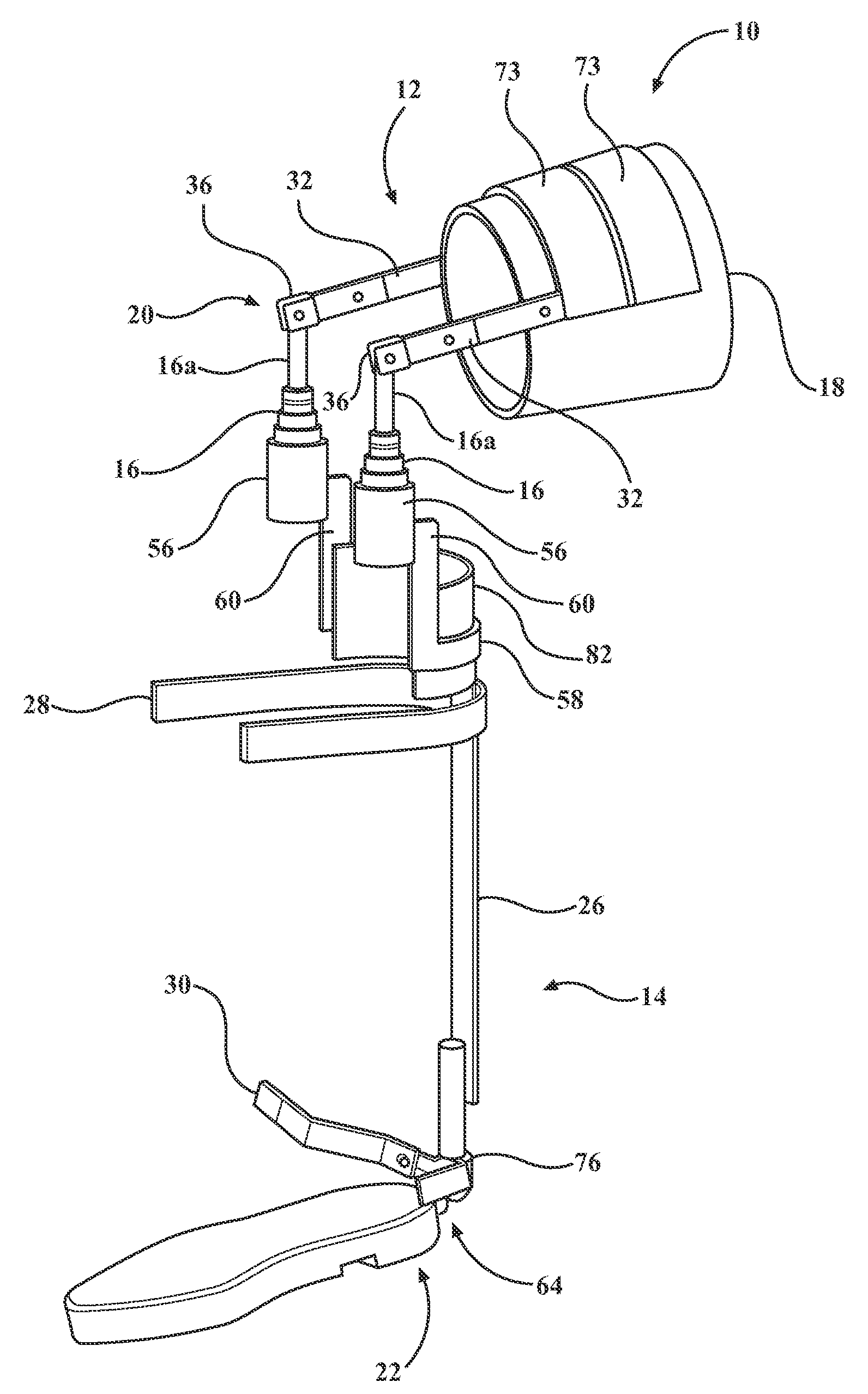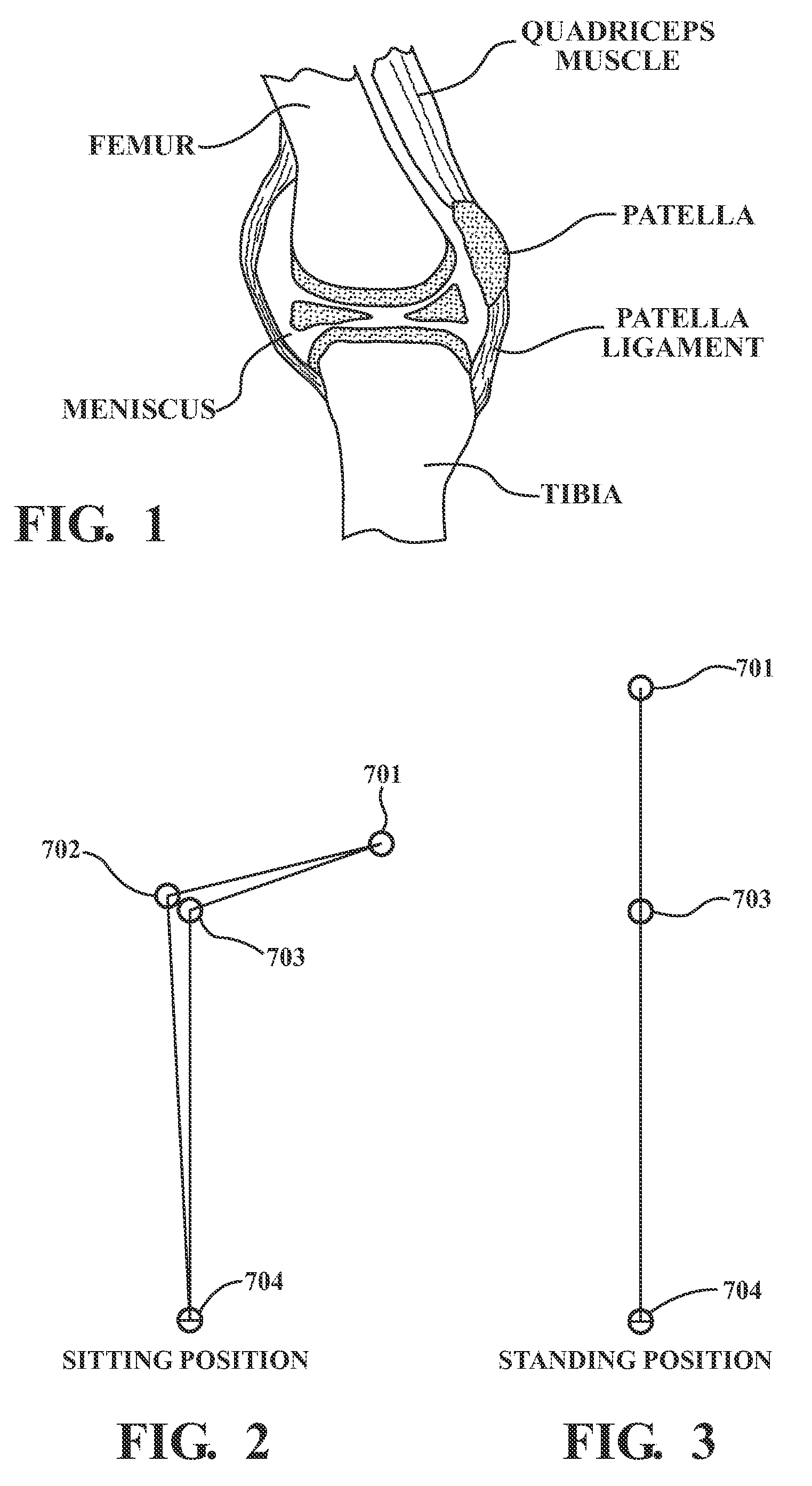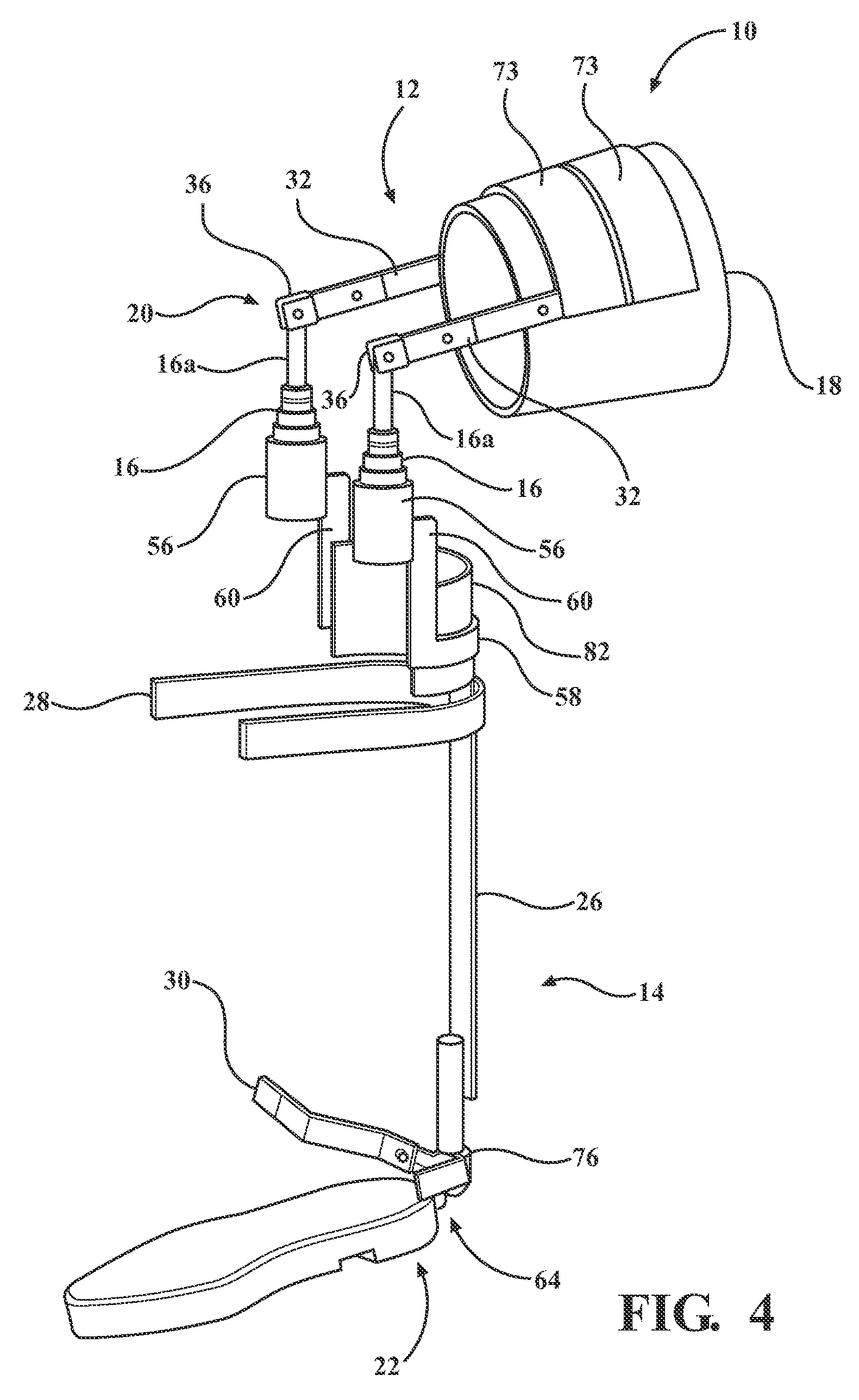Dynamic load bearing shock absorbing exoskeletal knee brace
a knee brace and dynamic load technology, applied in the field of dynamic load bearing exoskeleton knee brace, can solve the problems of difficult control of damage resulting from meniscus tears, difficult control of meniscus damage, and failure of meniscus to maintain its integrity, etc., and achieve the effect of reducing the contact between the femur and the tibia
- Summary
- Abstract
- Description
- Claims
- Application Information
AI Technical Summary
Benefits of technology
Problems solved by technology
Method used
Image
Examples
second embodiment
[0109]With reference now to FIG. 6 a second preferred embodiment of the brace 10, wherein like elements are referenced by like numbers increased by 100, adapted to be used with a shoe sole insert 122 having a pair of upwardly extending arms 84 is provided. The pair of upwardly extending arms 84 is rigidly fixed to the shoe sole insert 122. The shoe sole insert 122 made of a strong load bearing material as described above. Each of the pair of upwardly extending arms 84 is pivotably connected to the lower strut 126. The shoe sole insert 122 includes a base 88, dimensioned to support the foot of a user. In the second embodiment, the upper sleeve assembly 112 is pivotably connected to a pair of shock absorbers 116 in the same manner as described above.
[0110]With reference again to FIG. 6 and also to FIG. 11, the lower strut assembly 114 includes a pair of lower struts 126. The lower struts 126 have a top end 126a and a bottom end 126b. The lower struts 126 are generally axial and are sp...
fourth embodiment
[0116]With reference now to FIGS. 24-43, a fourth preferred embodiment of the knee brace 10, wherein like elements are referenced with like numbers increased by 300, is provided. The fourth embodiment utilizes the same principal of overcenter wherein the first pivot point 320 of the knee brace 310 is displaced above the natural pivot point of the user's knee. It is a further objective of the fourth preferred embodiment of the knee brace 310 to position the shock absorbers 316 so as to not interfere or rub against the leg of the user. It is another object of the fourth preferred embodiment of the knee brace 310 to position the upper struts 332 in alignment with the femur.
[0117]FIG. 22 and FIG. 23 show the methodology and design used to enable the overcenter principle to be used in a repeatable and reproducible manner, in the face of individual leg and knee size and shape variations. FIG. 23 shows the individual in the sitting position with 101 representing the thigh, 102 representing...
PUM
 Login to View More
Login to View More Abstract
Description
Claims
Application Information
 Login to View More
Login to View More - R&D
- Intellectual Property
- Life Sciences
- Materials
- Tech Scout
- Unparalleled Data Quality
- Higher Quality Content
- 60% Fewer Hallucinations
Browse by: Latest US Patents, China's latest patents, Technical Efficacy Thesaurus, Application Domain, Technology Topic, Popular Technical Reports.
© 2025 PatSnap. All rights reserved.Legal|Privacy policy|Modern Slavery Act Transparency Statement|Sitemap|About US| Contact US: help@patsnap.com



